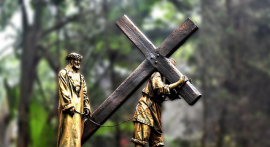Though about half of the congregation at Hillside LA — the English-speaking congregation of a Korean immigrant church called Los Angeles Christian Presbyterian Church — are non-Korean members, Pastor Sam Koh wasn’t set on making Hillside multi-ethnic from the get-go when he had first begun serving as the ministry’s lead pastor almost eight years ago. It was an incident that led to a series of conversations that led to the vision, according to Koh.
About a year and a half since he started serving at Hillside, Koh was taking one of his routine walks around the church to pray and get some exercise, when all of a sudden, he saw a Latino American teenager biking through the church parking lot and screaming out profanity against the church.
It was this incident that led Koh to start questioning, “Why would any kid say that about our church?” He began to engage with people in the community and asked them how they felt about the church. And he found that much of the community’s response was negative.
“Basically the community was looking at us from the outside and just thinking, ‘Why is this church even here in our community?’” Koh recalled.
These encounters led Koh to form a new vision for Hillside: “to be a relevant church that reaches from the local context all the way to the global context.”
“The location is very specific to the way the Lord wants to use the church to pour out into the surrounding community and to share the gospel,” said Koh.

About half of the congregation at Hillside LA are members from the local community.
To see that vision realized, the first obstacle awaiting Koh was getting the leaders of the church on board. At first, leaders of both Hillside and the Korean ministry (KM) of LACPC were hesitant, considering the fact that El Sereno’s community is “so eclectic,” as Koh put it. Many of El Sereno’s community used to be in gangs, for example. Would the church be prepared to welcome such individuals? Koh said the challenges were the first things to come to his mind as well.
“But I couldn’t deny what the Lord was placing on my heart,” Koh said, and added that he found that all of the concerns they had were “matters of preference or logistics.”
“I asked them, ‘Unless there is a very clear example from the Word why we shouldn’t go through with this — the gospel is uncomfortable enough, why don’t we go all out and allow this community to worship in a localized place?’” Koh explained.
But it seemed the challenges that Koh and the leaders faced in pursuit of this vision only began from there. Once the leaders came on board, the next challenge was to help the existing Korean members and the visiting members of the community to connect with one another. Initially, people would only spend time with those that they already felt comfortable with, and members of the KM would often look at the visiting non-Korean members “strangely,” Koh described. And at first, the non-Korean members who visited Hillside would only come once and never come again.
To help the members of Hillside get adjusted, Koh began to personally focus his efforts on building relationships with members from the community who visited the Sunday services by sharing his vision with each person and spending as much time with them as possible. And once they began to come to Hillside on a regular basis, Koh also personally discipled each member.
“It took a lot of energy and effort for them to feel comfortable,” said Koh. “But they saw the vision. They saw that it was more than just for themselves. And they saw the reason for them to be here.”

Small group leaders at Hillside LA pose for a picture.
Then, Hillside’s leaders tried to create more opportunities for the congregation to intermingle with one another and with the KM. Korean American and non-Korean members were mixed together into small groups. Non-Korean members were encouraged to join mission teams and outreach projects.
Hillside would join the LACPC picnics and other events to interact with the KM members. And in 2011, Hillside served a Thanksgiving meal for the KM for the first time, which has since become a church tradition. Among those who served the food were the non-Korean members, gloved up and serving turkey.
“We wanted to create these spaces where they can naturally come together, build relationships, and get to know one another,” Koh explained, “particularly those spaces that are outside of normal church activity.”
Doing things together outside of the normal Sunday service “brings a disruption to people’s habits,” Koh said, and forces people to think creatively and to become more open to interact with people they normally would not.
Though being intentional in becoming a church that engages with and invites members of the community has presented its challenges, Koh said there are unique benefits to becoming such a ministry, such as the fact that congregants stop trying to compete socially with one another.
“In a mono-ethnic, mono-cultural, mono-socioeconomic congregation, they start comparing the little things like the bags or the clothes people wear,” Koh said. “But once your church becomes so diverse, those things don’t matter anymore because everyone is so different anyway.”
The spirituality of the church also becomes more enriched, as congregants of different cultures express their emotions and faith in different ways.
“All of these different cultures have strengths and weaknesses, and these are all things we can draw and learn from one another,” he explained.
“In the end, it is about giving our people a local church to worship at. As long as the members of the community feel that they are invited and welcome, that’s a win for me.”












